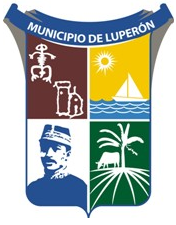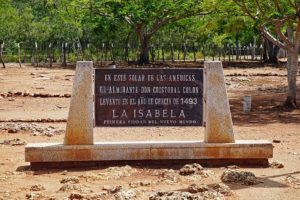Puerto Plata (Spanish pronunciation: [pweɾtoˈplata], Silver Port) is one of the northern provinces of the Dominican Republic. The area has become an increasingly popular tourist attraction since the late 1990s mainly due to its fine beaches. It borders the Septentrional mountain range to the north (which separates it from Laguna Salada).
Created from the Santiago Province in 1867 as a “maritime district”, it became a province in 1907, when maritime districts were suppressed by a new Dominican constitution.
Municipalities and municipal districts
- San Felipe de Puerto Plata
- Maimón (D.M.)
- Yásica Arriba (D.M.)
- Altamira
- Río Grande (D.M.)
- Guananico
- Imbert
- Los Hidalgos
- Cerro de Navas (D.M.)
- Luperón
- Los Bellosos (D.M.)
- La Isabela (D.M.)
- Sosúa
- Cabarete (D.M.)
- Sabaneta de Yásica (D.M.)
- Villa Isabela
- Estero Hondo (D.M.)
- La Jaiba (D.M.)
- Gualete (D.M.)
- Villa Montellano
Luperón is a town in the Puerto Plata province of the Dominican Republic. It lies in the north of the country and is a small tourist center and a coastal bay.
The town was formerly known as Blanco (White) or Pueblo Blanco (White Town), possibly after the many Spaniards who came to trade timber. Due to its shape and location, Luperon bay is ideal for sheltering from hurricanes, and many boats anchor there during the hurricane season.
Although there is no record of early inhabitants, it is said that Christopher Columbus had to enter the bay to protect his ships from a storm. Columbus named it “Bahia de Gracias” (Thanksgiving Bay), the current official name.
The current mayor is Danilo Morrobel of the Dominican Liberation Party (PLD in Spanish), who after a few failed attempts finally beat Mario Martinez of the PRD party to become the local mayor.
The slain dictator Rafael Leonidas Trujillo had plans to elevate Luperon to the status of province but was killed a few months before he was due to do it.
Three of the better-known families are the Morrobel, Cueto and Villamán families. They were the pioneers of this town, and their numbers continue to grow. Luperón’s beaches have made it well known as a prime vacation location. In recent years, a sizeable population of Luperonians have moved abroad (most notably to Spain), often maintaining their same careers by working within the resort and catering industries.
The bay contains extensive mangroves, unique to Hispaniola, and is an ecological habitat for many species.
Unlike most of the towns in the northern part of the island, also known as Cibao, Luperon does not have a big cockfighting fan base. The sport is legal in the Dominican Republic and followed by thousands in the country. It has an arena where, every Friday afternoon, the cockfights take place. Money is made out of bets and the entrance fee. The sport though is not as big in Luperón as in the other towns in the Puerto Plata province.
Every year the town holds a heavily attended softball tournament. This takes place every Saturday and Sunday at the local field. Games are played only during the daytime as the field lacks electric lights. The Williams family is noted for baseball expertise in Luperón.
Basketball is also popular, with a basketball tournament being held every summer. The tournament consists of local players, Luperón-born players and a few players from other municipalities, although there can only be two non-local players per team. Unlike softball, the basketball games are played at night, also during the weekends and the attendees are charged a small fee to enter.
La Isabela in Puerto Plata Province, Dominican Republic was the first Spanish town in the Americas. The site is 42 km west of the city of Puerto Plata, adjacent to the village of El Castillo. The area now forms a National Historic Park.
La Isabela was founded by Christopher Columbus during his second voyage in December 1493, and named after Queen Isabella I of Castile. The first attempt of a permanent settlement, the fort of La Navidad, established by Columbus a year earlier to the west of La Isabela, in what is present day Haiti, had been totally destroyed by the native Taíno people when he returned. La Isabela was abandoned by 1500.[1] The only earlier European settlements in the Americas were settlements by the Vikings in Greenland and Newfoundland which dated from 500 years earlier.
La Isabela was established to search for precious metals.[2] La Isabela was struck by the first known epidemic to spread from Europe to the New World in 1493[3] and two of the earliest North Atlantic hurricanes observed by Europeans in 1494 and 1495.
Hunger and disease soon led to mutiny, punishment, disillusion, and more hunger and disease. It reached the point where a group of settlers, led by Bernal de Pisa, attempted to capture and make off with several ships and go back to Spain. La Isabela barely survived until 1496 when Columbus decided to abandon it in favor of a new settlement, now Santo Domingo.
Puerto Plata The birthplace of tourism in the Dominican Republic, Puerto Plata continues to pack a mighty punch. Its spectacular, sprawling landscape combines sea, mountains, lush valleys, rivers, and a multitude of beaches. Its fertile soil grows cacao and coffee trees, while underneath rests the world’s clearest amber.
Savvy explorer Christopher Columbus knew there was much to discover on this northern Atlantic coastline–eventually finding gold deposits–when he glimpsed it from his ship in 1492. Drawn by the sight of clouds shimmering over Mount Isabel de Torres and illuminating Puerto Plata’s vast blue shoreline, he named the area the “Silver Port” and settled at La Isabela with a mixed community of Tainos–original inhabitants of the area–and Spaniards, built the first church and his first home in the Americas. You can follow Columbus’s trail and tour these archaeological ruins, now part of a national park.




